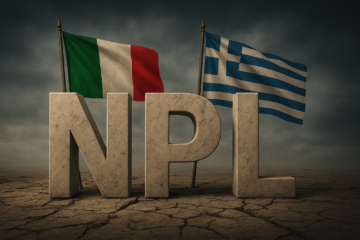Nippon Yusen K.K. — market cap as of 11/11/2016: ¥326.51bn (€2.94bn)
Mitsui O.S.K. Lines, Ltd. — market cap as of 11/11/2016: ¥320.87bn (€2.89bn)
Kawasaki Kisen Kaisha, Ltd. — market cap as of 11/11/2016: ¥225.45bn (€2.03bn)
Introduction
On October 31, Nippon Yusen K.K., Mitsui O.S.K. Lines, and Kawasaki Kisen Kaisha reached an agreement to combine their container shipping operations in a joint venture that would control 7% of total global market share and command ~¥2tn (~€18bn) in combined revenues, making it the world’s 6th largest shipping company by capacity. The freight industry has been experiencing a very turbulent period, as a glut of shipping capacity has driven freight rates down to levels that barely allow companies to break-even. In light of the overall consolidation tendency of the industry, the three companies hope to save a total of ¥110bn (€990m) annually through cost synergies. In the final arrangement, Nippon Yusen will hold a 38% interest, whereas Mitsui O.S.K. and Kawasaki Kisen would each hold a 31% stake in the final enterprise. The total contribution to the joint venture is ~¥300bn (~€2.7bn). The company is expected to begin operations in April 2018.
The companies
The three companies, all headquartered in Tokyo, are the largest freight marine shipping operators in Japan. Nippon Yusen K.K. (NYK) posted revenues for ¥2.27tn (€20.25bn, -5.4% YoY) and net profits for ¥47bn (€428m, -61.7% YoY) in 2015. The same year, Mitsui O.S.K. Lines (MOL) earned revenues of ¥1.7tn (€15.4bn, -5.77% YoY), but closed with a ¥170.5bn loss (€1.5bn, -502.4% YoY). Finally, Kawasaki Kisen Kaisha (K-Line) also closed the fiscal year with a ¥51.5bn loss (€463.5m, -292% YoY), despite recording revenues for ¥1.2tn (€11.2bn, -8% YoY). These figures already give an idea as to the underlying drivers of this deal, which we are going to analyze more thoroughly in the next sections.
The freight shipping industry
The fortune of the global marine shipping industry is heavily dependent upon the development of freight rates, that is, the price charged for shipping a cargo from one point to another. In particular, for marine liners, freight rates are expressed in terms of $/TEU, where a TEU is a twenty foot-long equivalent container. Since the industry is very fragmented and the service strongly commoditized, firms are generally price takers and tend to charge the rates quoted by the China Containerized Freight Index (CCFI), the Baltic Dry Index (BDI) or the Shanghai Containerized Freight Index (SCFI).
In recent years, Freight Rates experienced a sharp decline reaching a level unsustainable even for market leaders. This recent decline is attributable to (i) lower bunker prices (passed through) and to (ii) a significant overcapacity/oversupply caused by the recent slowdown in global trade growth and overly optimistic capex plans. The most recent victim of this adverse market condition has been South Korean liner Hanjin Shipping, which filed for bankruptcy in September.
Shipping companies are trying to fight their capacity overhang and to alleviate the downward pressure from freight rates in three different ways: (i) scrapping, (ii) alliances, and (iii) consolidation. Indeed, in order to rebalance supply and demand, companies are dismantling part of their vessels, usually the most obsolete and less efficient. Moreover, these companies tend to agree on strategic partnerships called Alliances. Alliances represent a way to enhance cost efficiencies, increase capacity utilization, and access a larger network. Finally, in search of cost synergies, shipping companies are going through a significant merger wave. In particular, Chinese companies Cosco Shipping and China Shipping Group merged (with the help of the government) in February, French company CMA CGM completed its acquisition of Singaporean liner NOL in September, while German company Hapag Lloyd and United Arab Shipping Group merged over the summer.
Deal structure
The new operation will be structured as a joint venture, into which the parent companies will inject cash and in-kind assets, such as ships and stocks. The total contribution will comprise ¥300bn (€2.7bn), of which Nippon Yusen will be responsible for 38%, and Mitsui O.S.K. and Kawasaki Kisen will each be responsible for 31%. The companies will hold an interest in the joint venture in line with their contributions. The plan is to establish the JV by July 2017, and to begin operations by April 2018.
The new entity will integrate the container shipping activities and the container terminal business worldwide except for Japan. Since the companies had already been cooperating in some product lines through vessel-sharing agreements and alliance schemes, the joint venture organization comes naturally and at low costs.
Strategic rationale
After a period of industry overcapacity, declining oil prices, low freight rates, and sluggish economic growth, this deal represents a bid by the three Japanese players to stay afloat.
As remarked by the companies’ representatives after the announcement of the transaction, the primary goal will be to achieve significant synergies, particularly on the cost side. Management hopes to realize these through a mix of operational efficiency improvements and economies of scale. The combined vessel fleet, expected to count 256 vessels for a total of ~1.4m twenty-foot equivalent units (TEUs), should guarantee greater performance stability and a return to profitability, as the three companies’ individual container businesses were all reportedly losing money. In addition, the enhanced global reach and wider liner network that the JV will be able to benefit from should positively affect both the quality and competitiveness of the services offered. Total integration benefits are valued at ¥110bn per annum, while projected combined yearly sales as of March 2016 amount to ~¥2.04tn.
The transaction confirms the ongoing consolidation trend in the liner containership industry, which has been experiencing a wave of mergers and acquisitions aimed at gaining market share and competitiveness over peers. K-Line, MOL and NYK are trying with this transaction to benefit from their respective market positions and to enlarge their overall scale of operations. As mentioned, the JV would be the 6th world largest container shipping company in terms of TEUs, with a 7% global market share (according to Alphaliner).
Market reaction
Not surprisingly, the market interpreted in a positive way the companies’ decision to combine their container businesses. On October 31, NYK closed at ¥215, a 6.44% increase against Friday’s closing of ¥202 per share. MOL and KL share prices also rose, respectively with a 5.62% and 3.86% increase against Friday’s closing. Overall, the deal added ~¥50.64bn to the combined value of the three companies on the announcement day.
[edmc id= 4319]Download as PDF[/edmc]



0 Comments